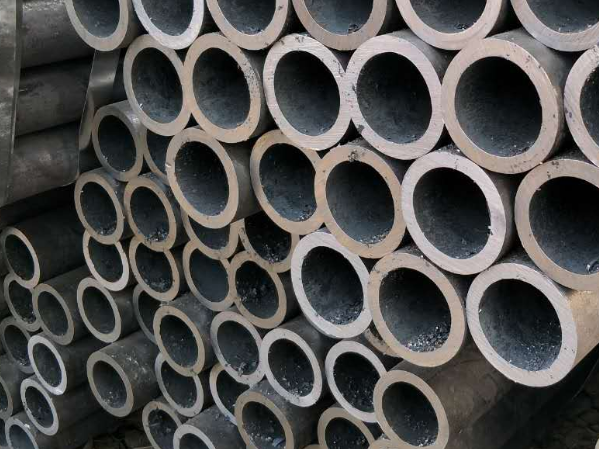
Pipeline degaussing methods usually include high temperature degaussing method, DC degaussing method, AC degaussing method, and exponential decay degaussing method.

The high-temperature degaussing method has extremely high requirements on equipment, and requires vacuum conditions, so it is basically unusable. The DC degaussing method can be used for pipeline degaussing, but the power consumption is relatively high (usually thousands of watts, or even tens of kilowatts), and the heat generation is relatively severe, so it needs the cooperation of a magnetometer , the operation is cumbersome (but the effect is better), and it is difficult to demagnetize large pipelines. Although the AC degaussing method is simple and the effect is good, it also has huge power consumption (usually tens of kilowatts) and severe heat generation, which requires the cooperation of transmission equipment. For the shortcomings of large pipelines such as difficult degaussing, the exponential decay and magnetic link degaussing method is an ideal degaussing method, which has the advantages of low power consumption (only hundreds of watts), no heat generation, high efficiency, good effect, and simple operation.
The electromagnetic coil composed of welding wires with a section of 35~50mm is used to complete the degaussing of direct current and alternating current. The wire is wound on a carbon steel pipe or two butt-connected steel pipes, and coils with different turns are wound according to the residual magnetism of the steel pipes. When using direct current to demagnetize, welding rectifiers or converters with a current of 500~1000A must be used, including multi-station ones. When degaussing with alternating current, a welding transformer with a current of 500~1000A is used. All power sources used shall have remote control and current regulation devices, allowing the use of ballast rheostats. When the welding transformer is used for degaussing, it is recommended to use the portable current measuring card meter LI-4505, LI-4501, etc. to measure the degaussing current. With the help of special electromagnet degaussing, welding rectifier or transformer should be used as power supply.
Principle and method of demagnetization:
Carbon steel seamless and welded pipes are usually magnetic due to cold working (such as cold rolling, cold drawing) or ferrite structure. Here are 4 effective demagnetization methods and principles:
1. Annealing treatment (the most thorough)
Principle:
By heating to the critical temperature (above Ac1) and then slowly cooling, the lattice is reorganized, the cold working stress is eliminated, and the austenite or pearlite structure (non-magnetic) is restored.
Steps:
Heat to 700~900℃ (depending on the carbon content, such as about 880℃ for 20# steel).
Insulation 1~2 hours/25mm wall thickness.
Furnace cooling or air cooling (avoid secondary stress caused by water cooling).
Effect:
Completely eliminate magnetism (remanent magnetism <1 gauss).
Applicable to pipes for precision instruments and medical equipment.
Note:
The hardness may be reduced after annealing, and the mechanical properties need to be weighed.
2. AC demagnetization method (fast, suitable for production line application)
Principle:
Use alternating magnetic field to disrupt the arrangement of magnetic domains, suitable for local demagnetization of formed pipes.
Tools:
Industrial demagnetizer (such as handheld electromagnetic coil).
Steps:
Place the steel pipe in the alternating magnetic field and slowly reduce the magnetic field strength to zero.
Effect:
The surface residual magnetism is significantly reduced (but weak magnetism may remain).
Suitable for post-weld demagnetization and post-machining processing.
3. Mechanical vibration demagnetization (simple, staged treatment)
Principle:
Destroy the directional arrangement of magnetic domains through high-frequency vibration.
Method:
Use vibration aging equipment or manual tapping (need to last 10 to 30 minutes).
Effect:
Partially reduce magnetism, suitable for scenarios with less stringent requirements on magnetism.
4. Material substitution (preventive solution)
Select low-magnetic steel:
Austenitic stainless steel (such as 304, 316): completely non-magnetic, but high cost.
High manganese steel (such as Hadfield steel): still maintains low magnetism after cold working.
Notes on demagnetization of carbon steel pipes:
1. Magnetic detection:
Use a Gauss meter to measure the residual magnetism (generally required to be <5 Gauss).
2. Effect of cold working:
If the steel pipe needs to be bent or cut later, magnetism may be reintroduced. It is recommended to demagnetize it again after processing.
3. Effect of welding:
The heat affected zone of welding may be locally magnetized and requires targeted demagnetization.
Read more: Production Process of Carbon Seamless Steel Pipe or Steel Pipe Annealing Process
